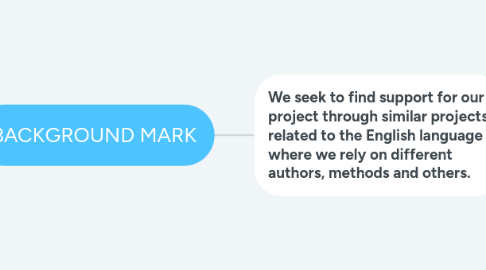
1. We seek to find support for our project through similar projects related to the English language where we rely on different authors, methods and others.
1.1. Authors
1.1.1. Longman Dictionary of Language Teaching and Applied Linguistic
1.1.1.1. It shows us how a language is taught throughprinciplesand systematized processes where we see the nature of language, its purposes, educational objectives and techniques (Rojas., 2004 )
1.1.2. Vygotsky
1.1.2.1. Teaches how the language thinks by complexesand by concepts, as this occurs in the child's tender age and also influences their interactivity with the environment in which it unfolds in addition to the need that he sees for his social life, also mentions the different changes in meaning in language (undergraduate, 2004)
1.2. Methods
1.2.1. Grammar-Translation Method
1.2.1.1. Is the old method of teaching is based on the assimilation of grammatical rules, vocabulary and execution of translation exercises all starting with the mother tongue and then making their respective translation(slideshare, 2012)
1.2.2. Direct Method
1.2.2.1. Relates speech formats with gestures, objects, situations and actions without using the mother tongue as recourse and eliminates translation as a teaching method (motivation, 2016)
1.2.3. Audio-Lingual Method
1.2.3.1. Priority is givenwhen speaking, the student is trying to learn vocabulary through images and repetition of them. Treats language as habit and social form before the medium (slideshare,2012)
1.3. METHODS WITH AUTHOR
1.3.1. Suggestopedia by Georgi Lozanov
1.3.1.1. The methodology of this method is based on the mental status of students paying attention to their desires, their effective states and solving problems of daily life all this to unconsciously influence the student some material resources are also used (Morales & Perez, 1989)
1.3.2. Silent way by Caleb Gattegno
1.3.2.1. Try to keep the teacher silent as much as possible so that the student interacts and communicates more so that he can find new ways to solve their problems and not all are repetitive (Quintana,2012)
1.3.3. Total Physical Response Method (TPR) by James Asher
1.3.3.1. The professor gives orders that students obey without asking once they feel safe they begin to interact with their peers the weather should be pleasant for the student to contribute to its self-development (Rojas,2004)
